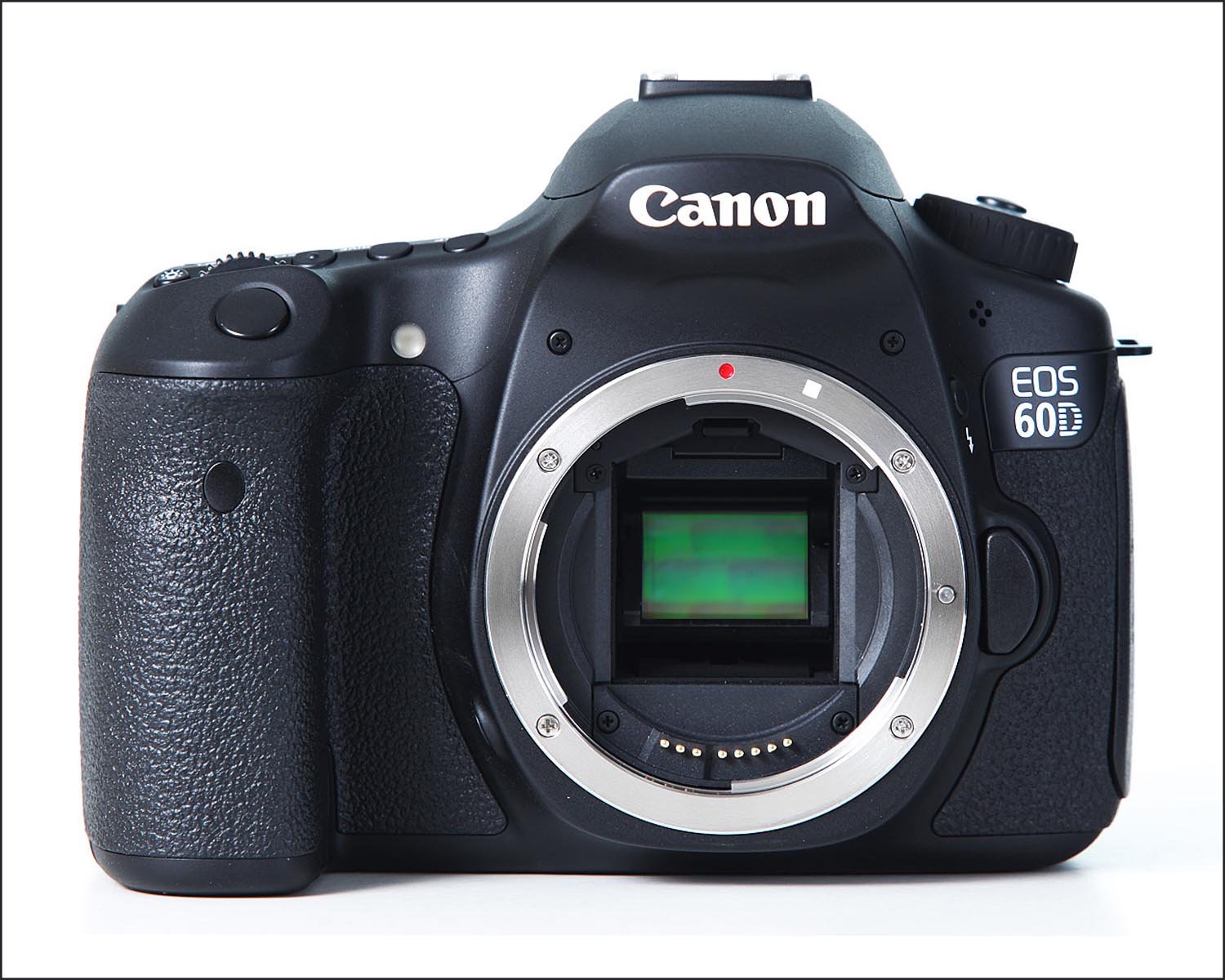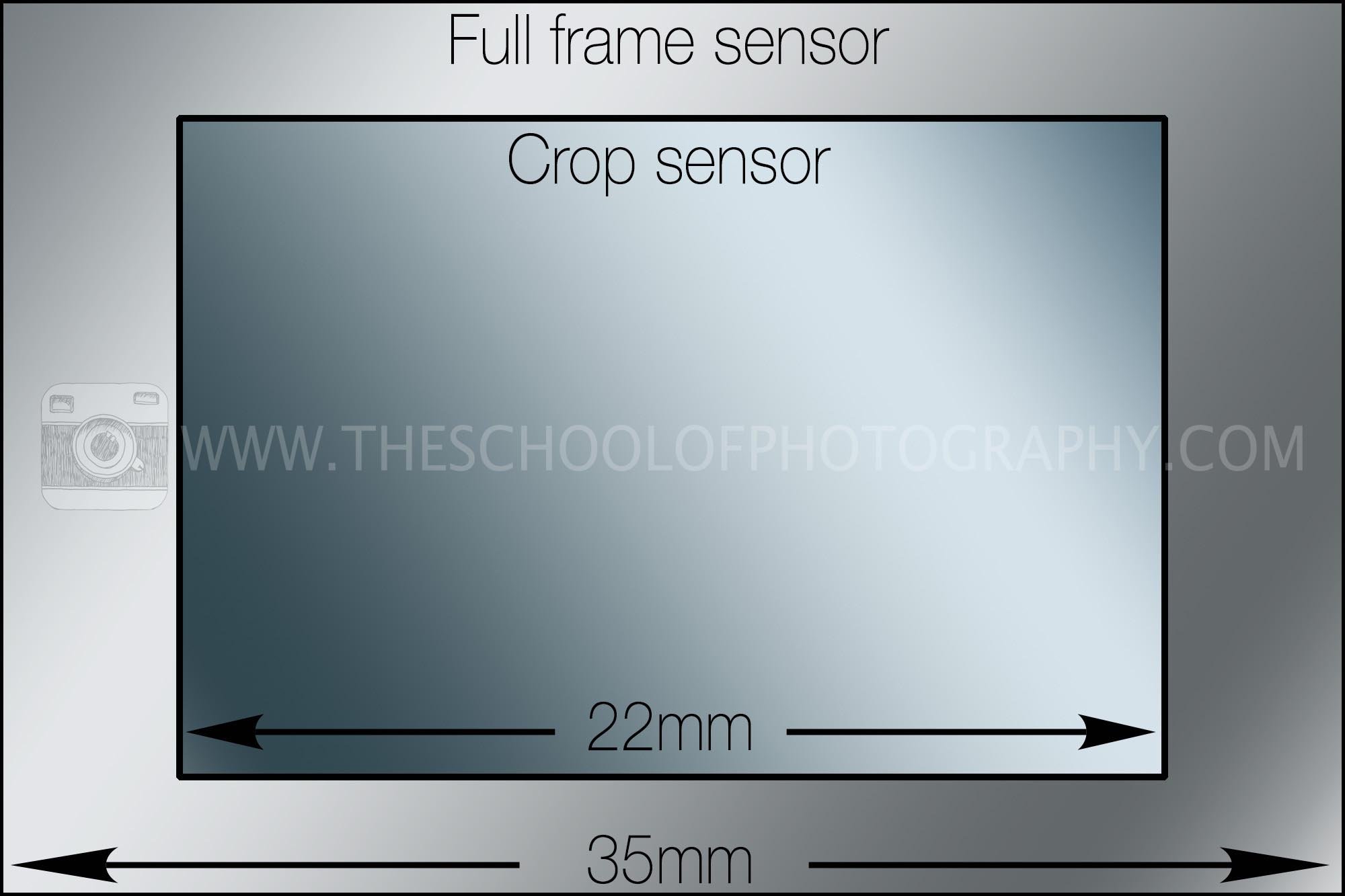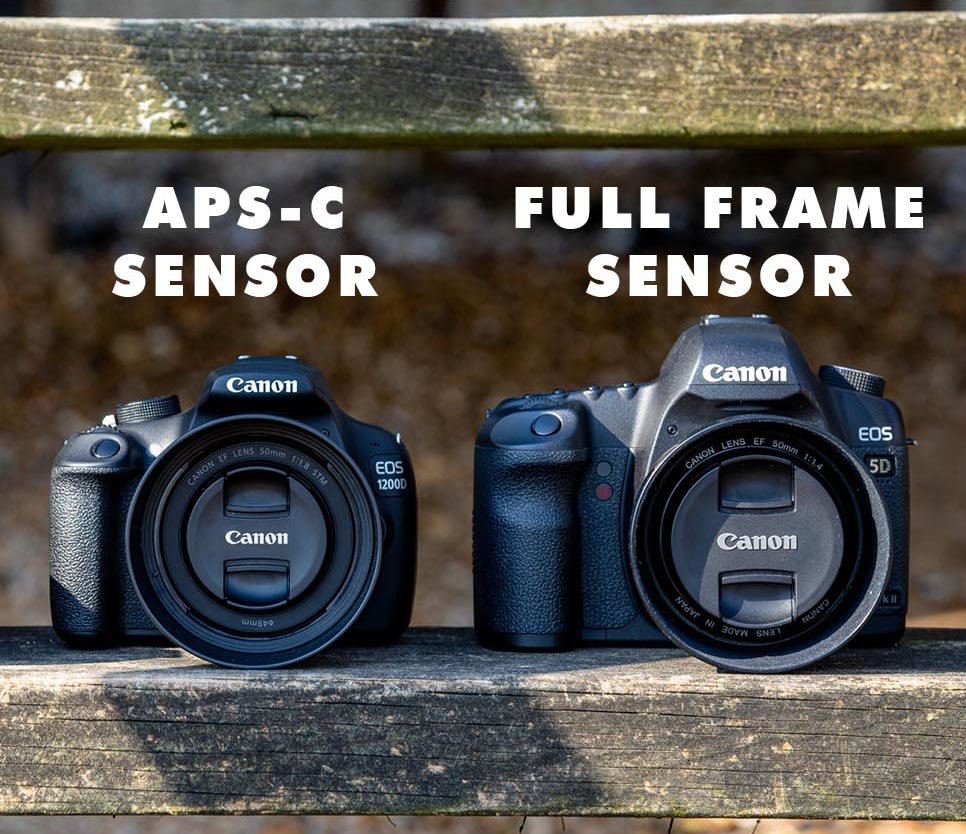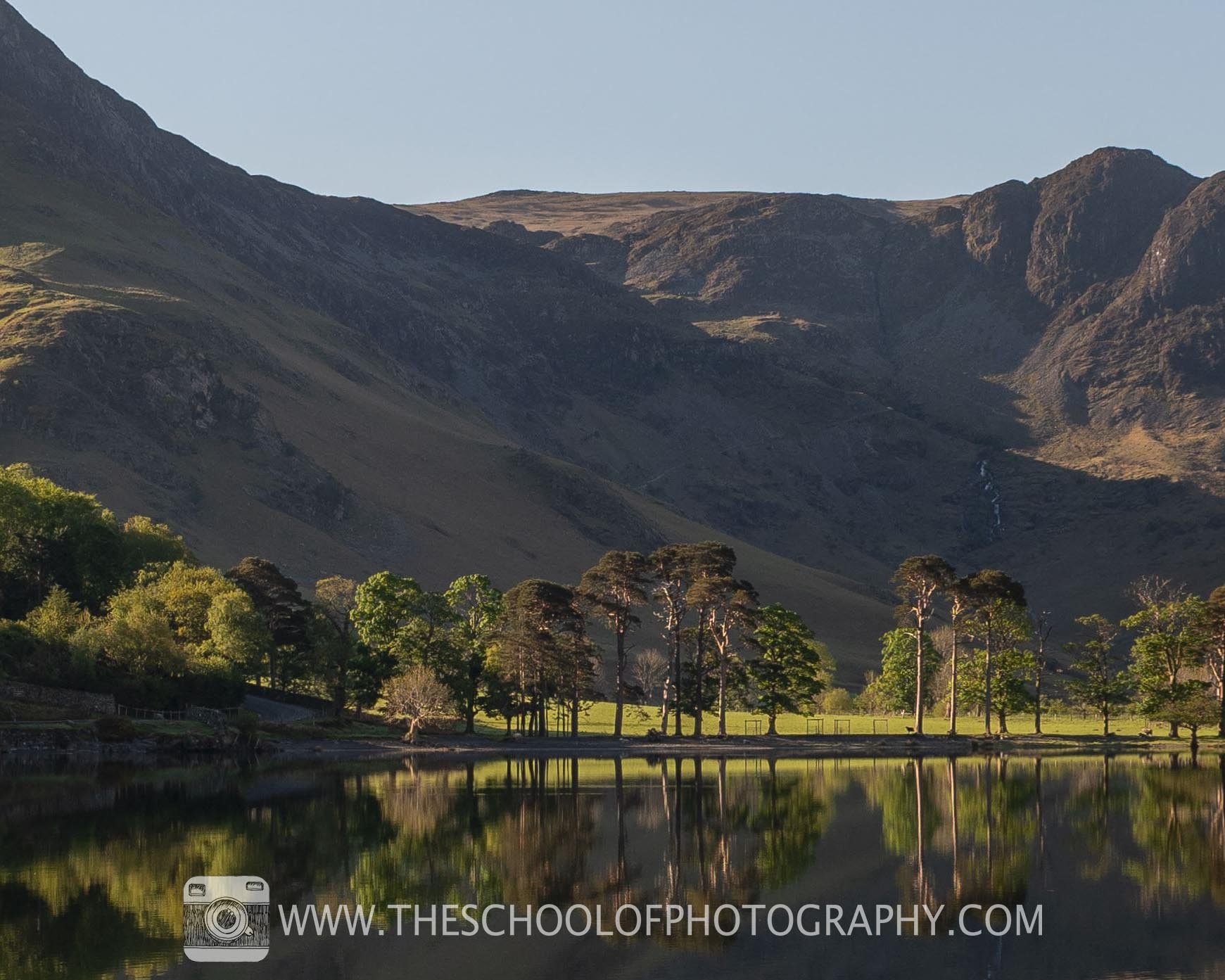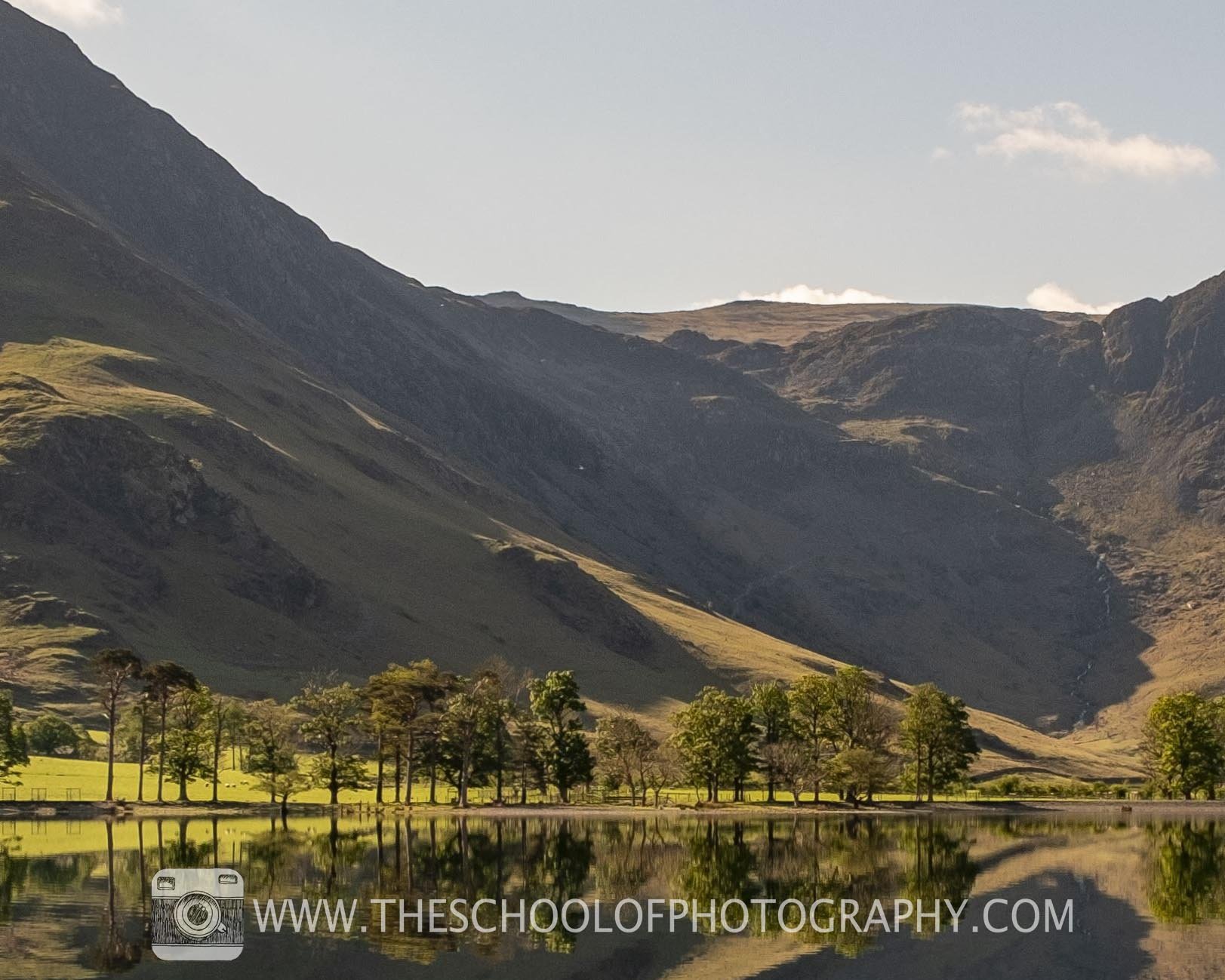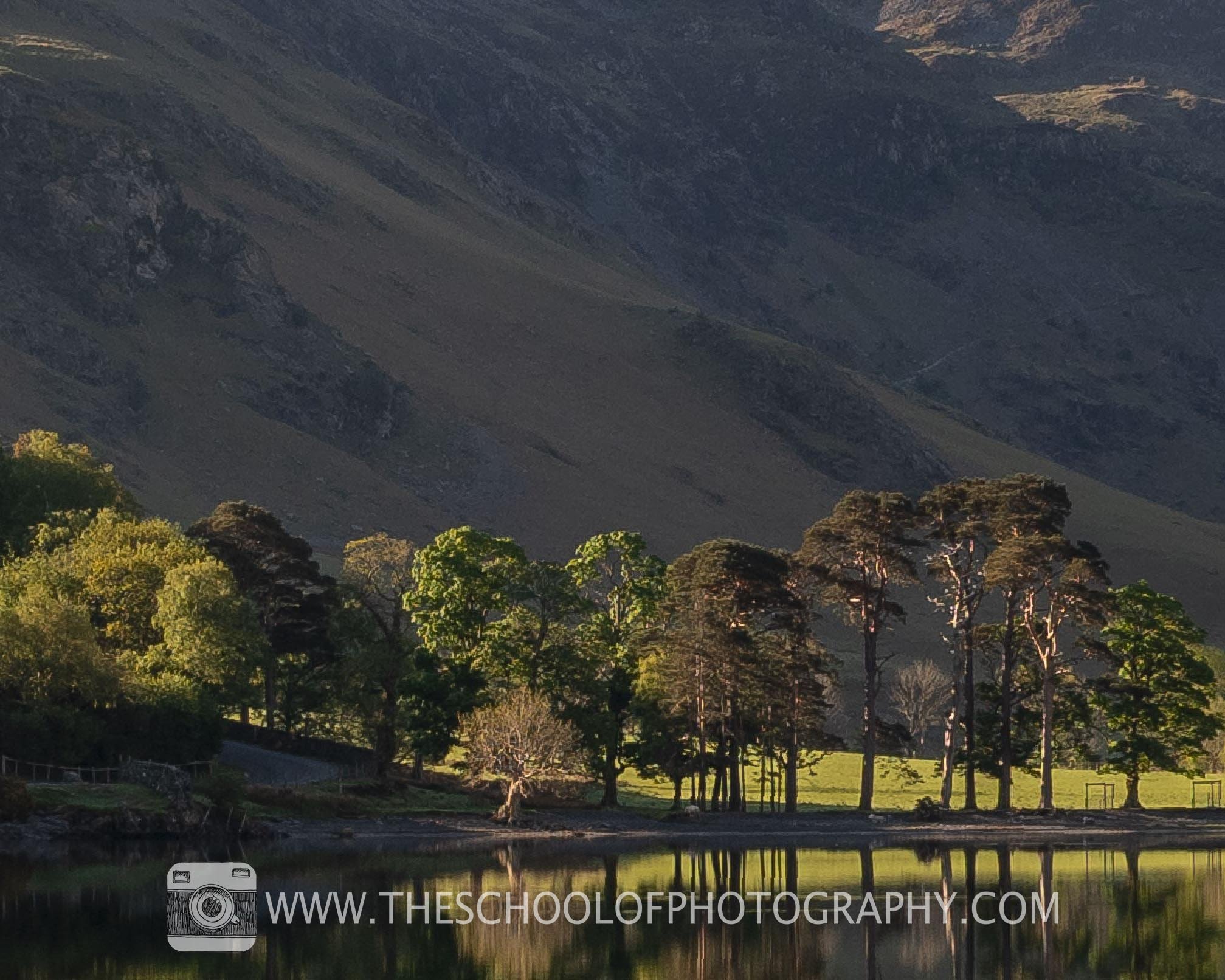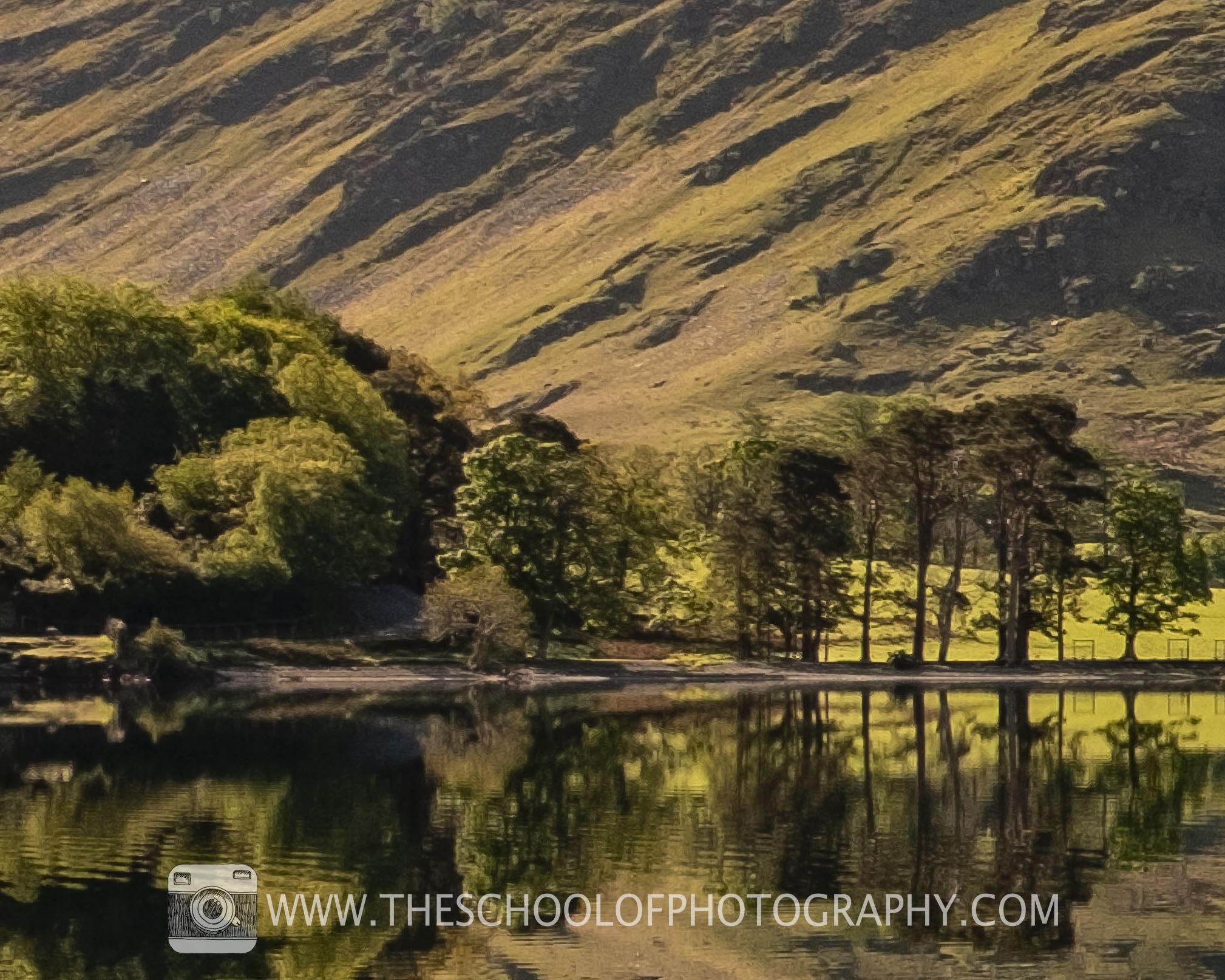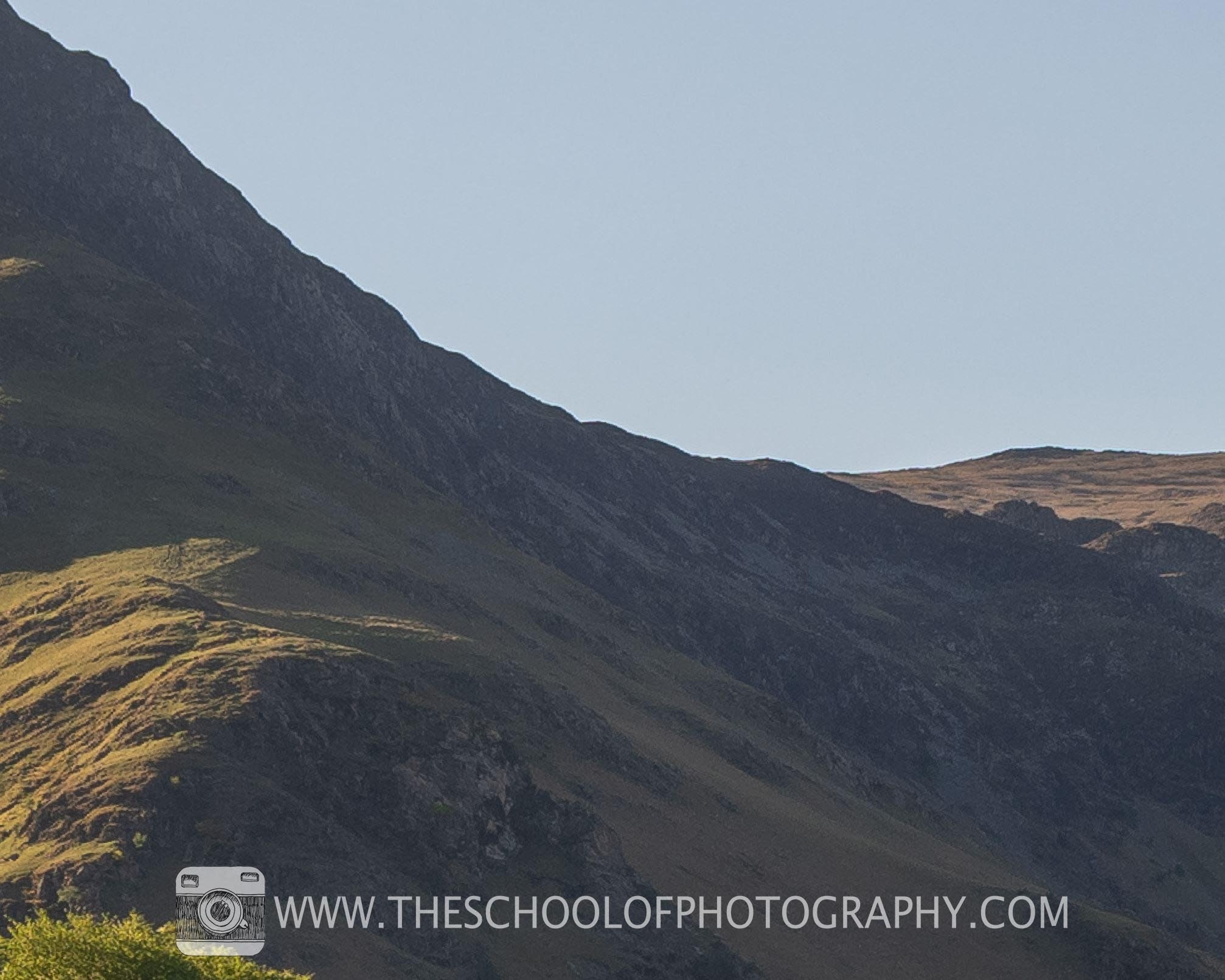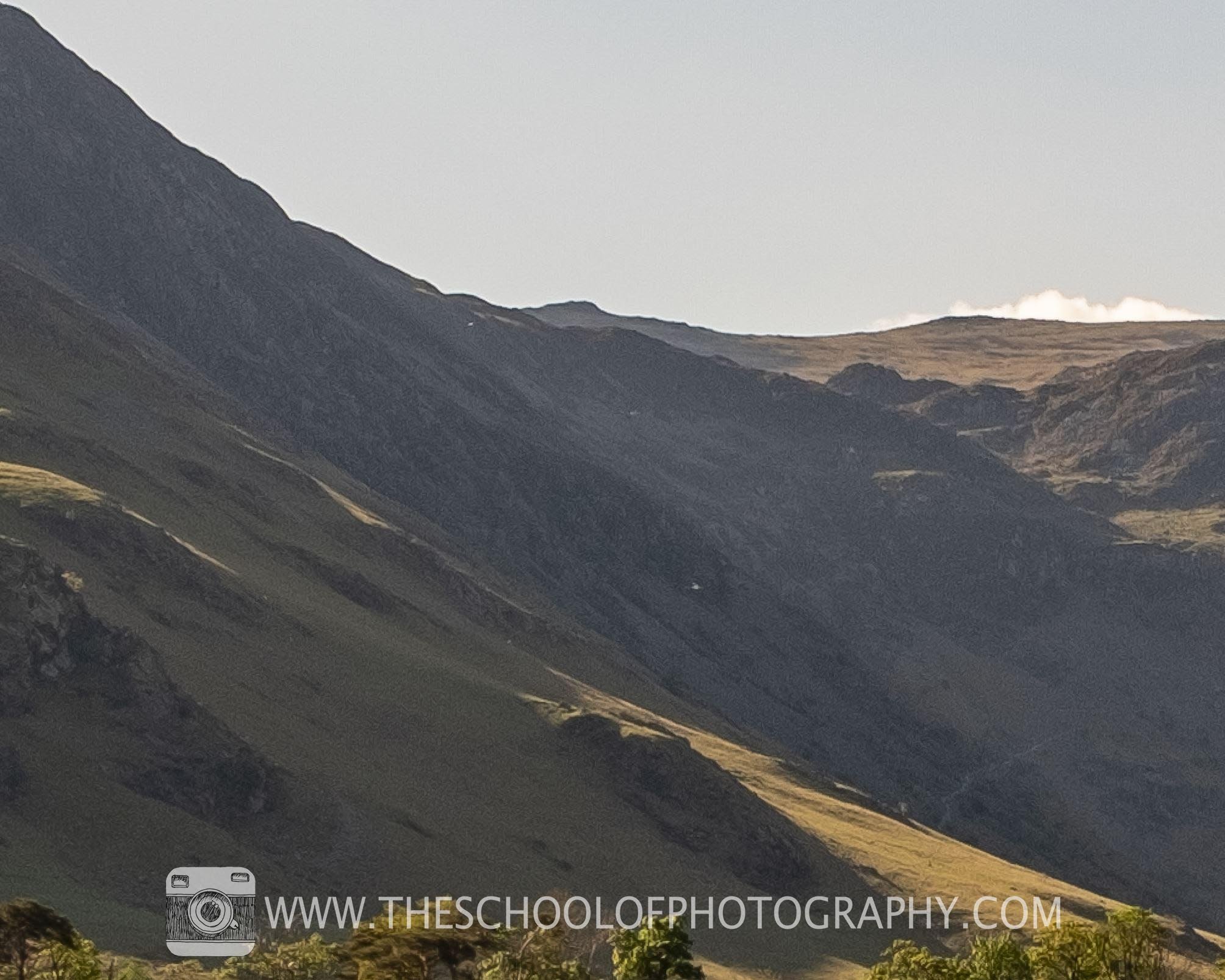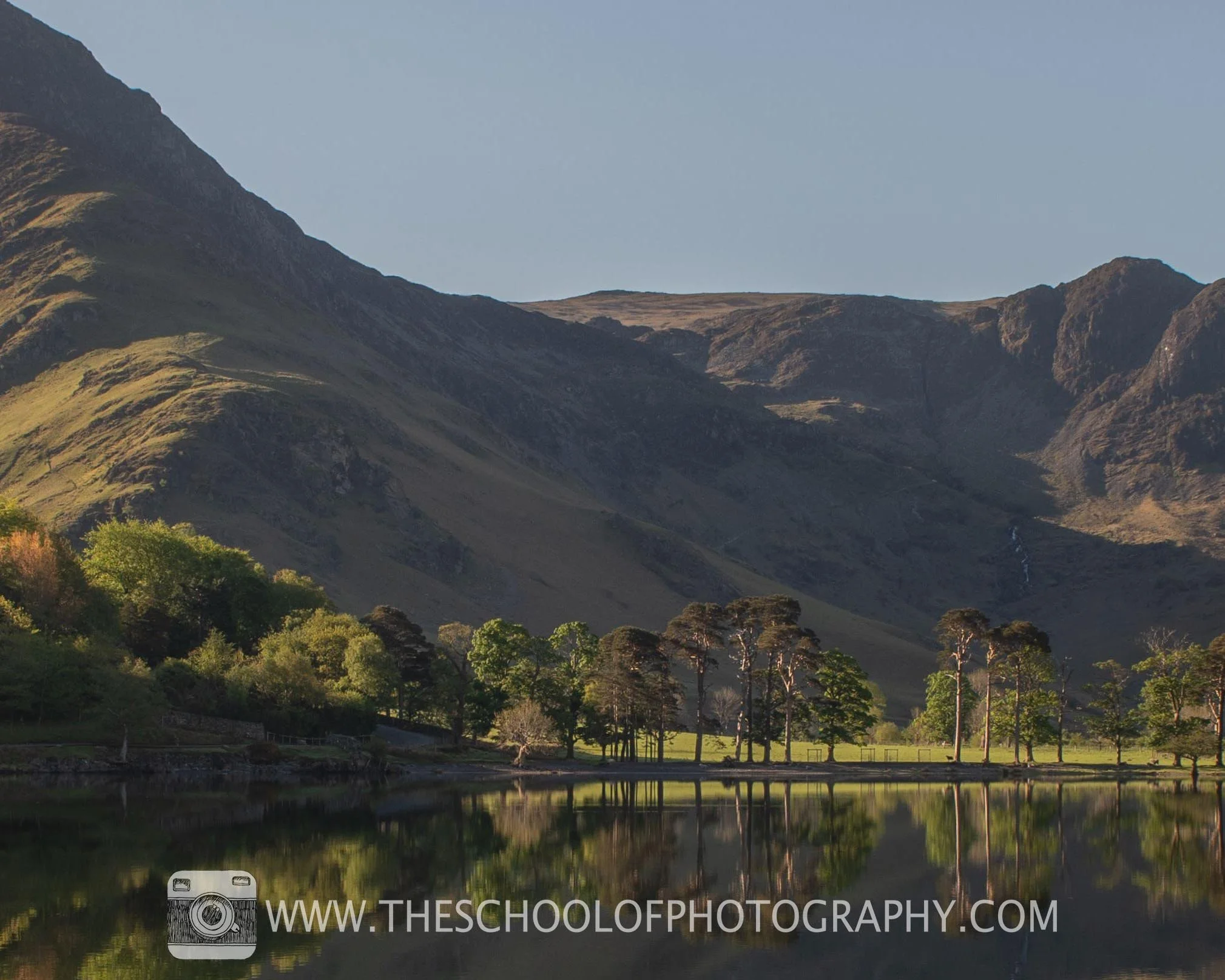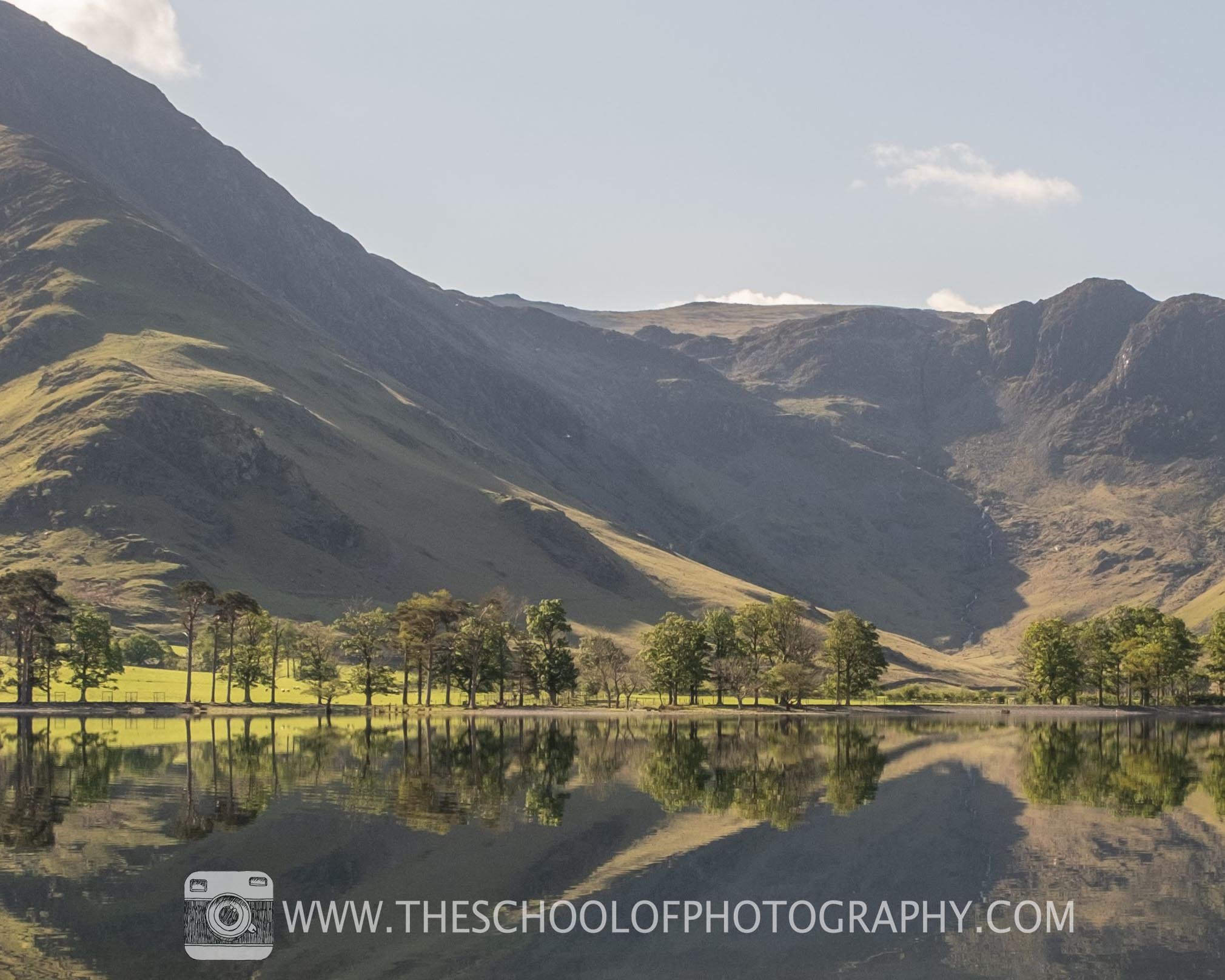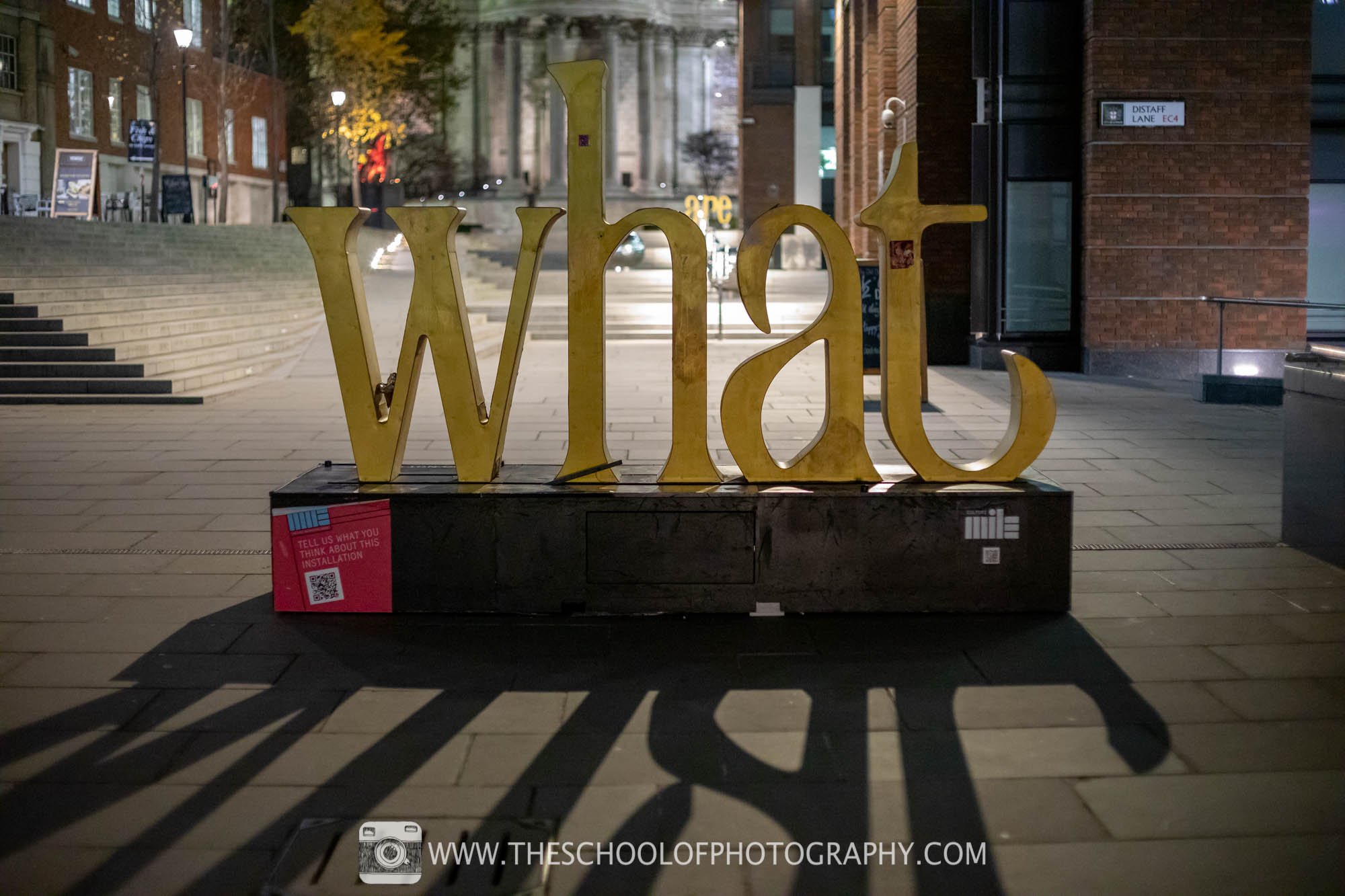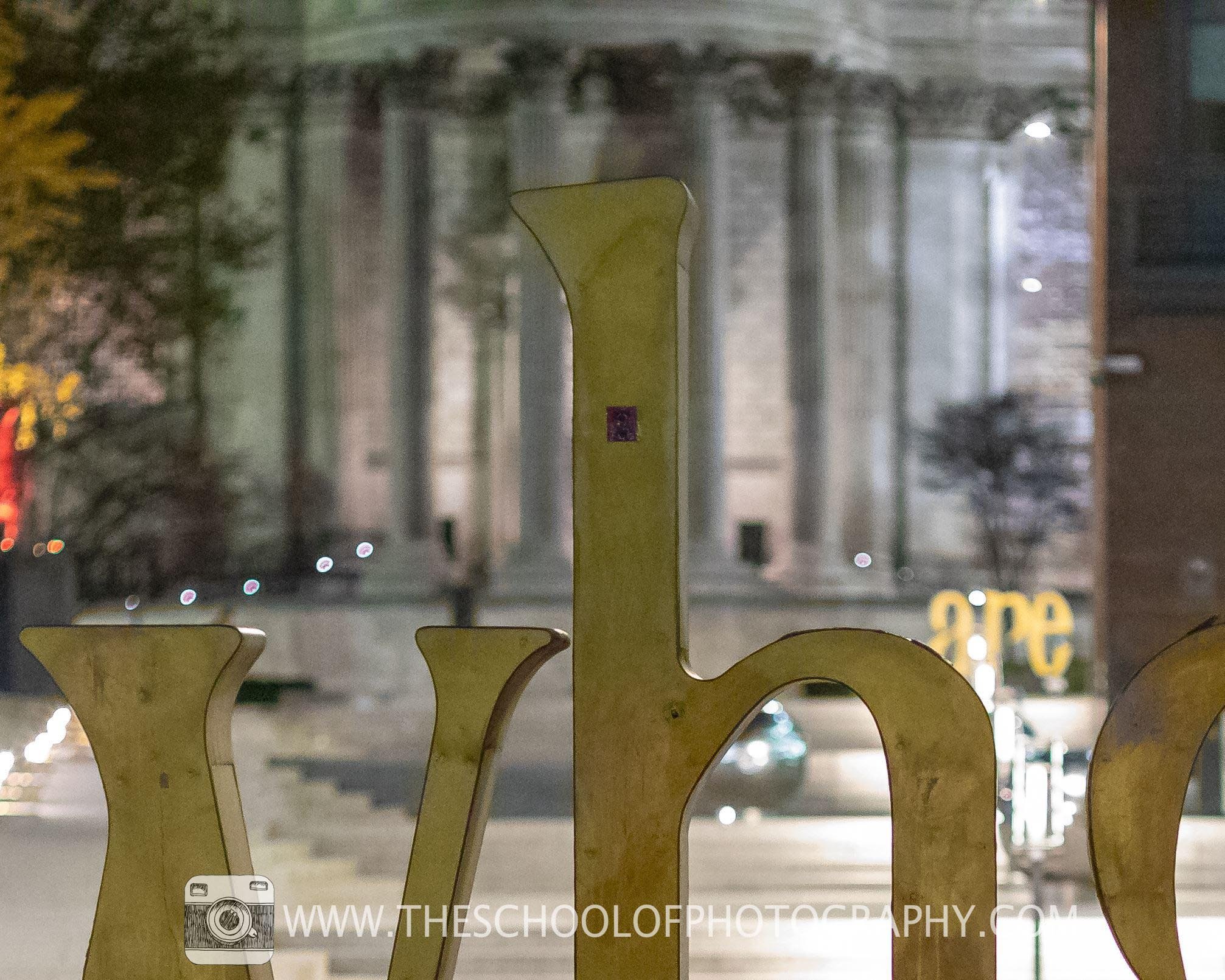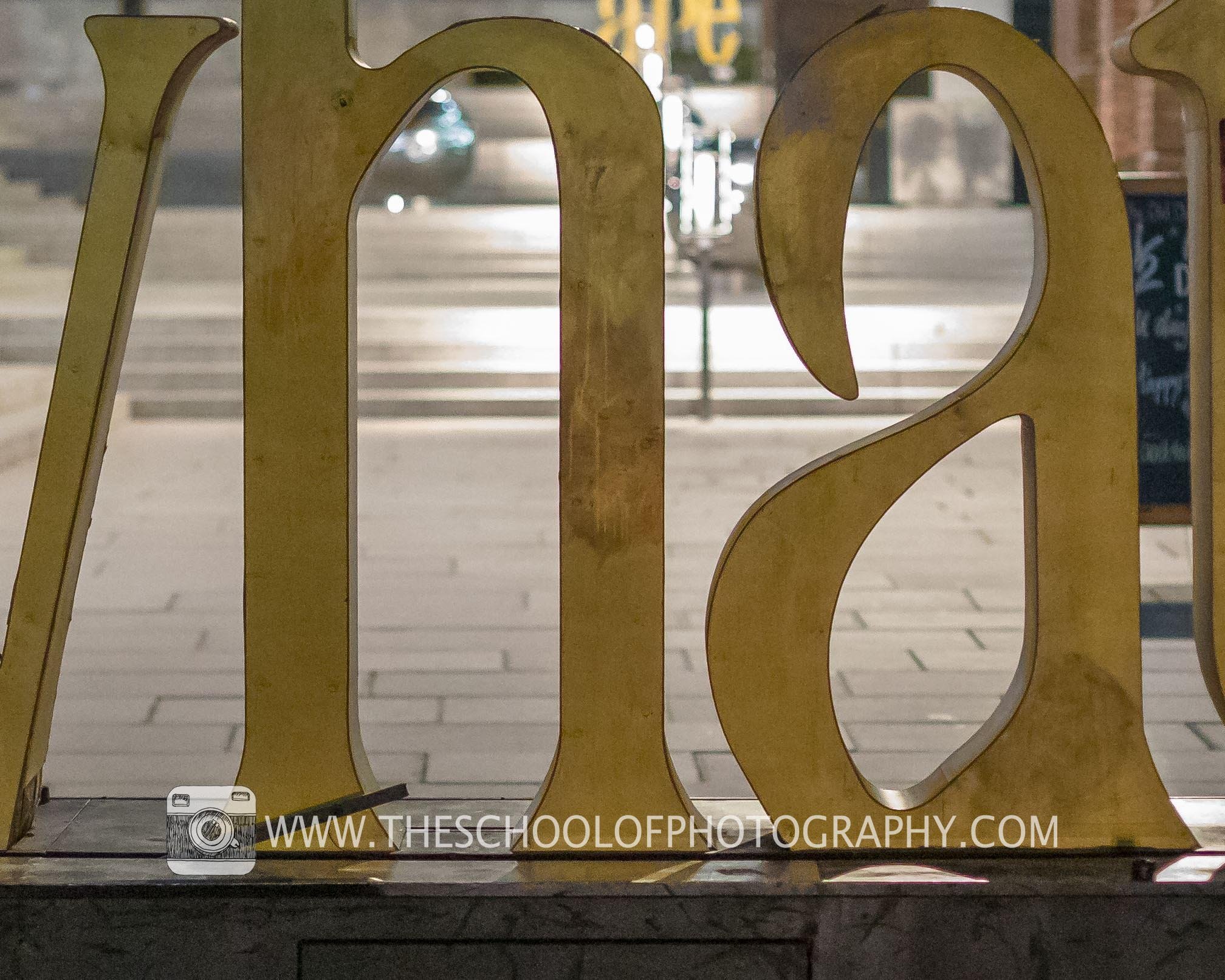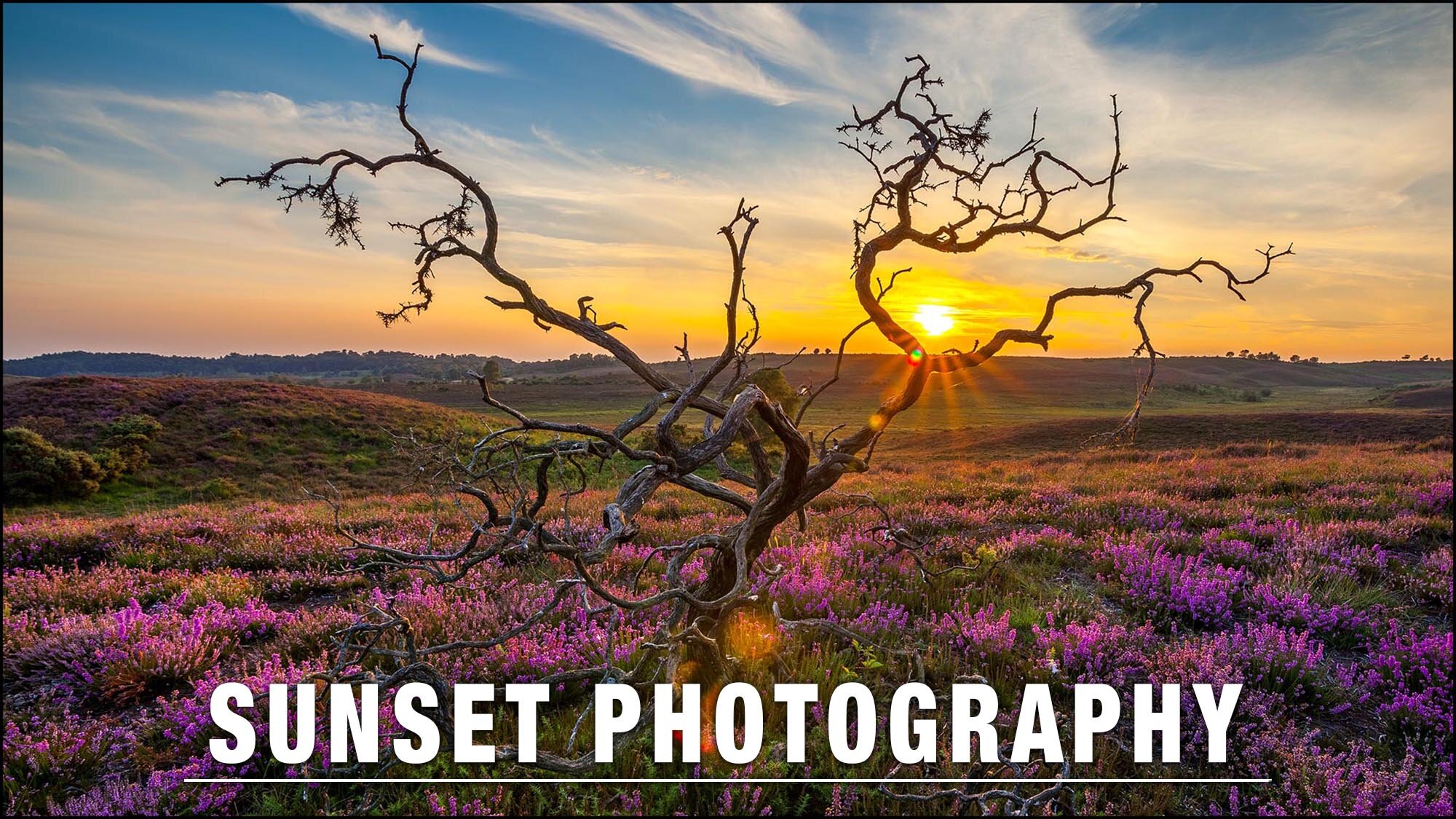Full Frame vs APS-C – Image Quality is Key!
Should you upgrade to a full frame camera? Are APS-C (crop) sensor cameras good enough? You know about the size differences, it’s the image quality you need to see. Is it worth it?
Well, here we are going to test the difference in image quality between full frame and APS-C sensor cameras. We will look at the difference in noise, dynamic range and the fine detail between the two.
Get access to ALL our online courses – 1000’s of videos, worksheets, critiques of student’s work, personalised support and much more with our monthly membership.
Full Frame and APS-C Sensor Basics
Before we move onto the test let’s get the basics out the way. Of course, if you are familiar with all this, then simply scroll down the page to the test results.
What is a Camera Sensor?
The green part is the camera’s sensor. This captures the light and creates the image. This camera has a crop or APS-C sensor
Let’s keep this simple! A camera’s sensor is what captures the light and creates an image, in the old days it was camera film that captured the light. Now it’s a digital chip, commonly known as a camera sensor.
Why the different sensor sizes?
There are 3 common sizes of camera sensors and here they are in order of big to small:
Full frame sensor – 35mm along its longest edge (based on the old 35mm negative size).
APS-C Sensor (also known as Crop Sensor) – 22mm along its longest edge.
Micro 4 3 sensor – 17mm along its longest edge.
For this blog we will be focusing on full frame and crop (APS-C) cameras only.
The main difference between a crop sensor (APS-C) and a full frame sensor is its size. In general, the bigger the sensor, the bigger the camera body will be, and more information will be captured.
There are two main reasons camera companies make different size sensors. The first is cost – it cost less to manufacture smaller sensors therefore that cost can then be passed onto the customer. In this very competitive world of ‘What camera should I buy?’ cost makes a big difference in your decision.
The second is size – Full frame cameras are bigger and heavier, so some people chose the crop sensor system to make their kit smaller and lighter. Not only will the camera body be smaller but so will the lenses and all the accessories.
Difference in the camera’s sensor sizes between a APS-C (crop) and Full Frame sensor.
Two different cameras showing the physical size difference between APS-C and Full Frame sensor cameras.
Your Sensor’s effect on Image Quality
Now we’ve discussed the different sizes, it’s time to consider the image quality in relation to the size of the sensor. In short, the bigger the sensor size, the better the image quality will be. But, is it enough to warrant upgrading to a full frame camera or is the quality of a crop sensor sufficient enough for you to ditch big full frame systems?
When deciding which is right for you, firstly consider the following pros and cons.
Full Frame Sensors
Pros
Bigger sensors mean more detail – Comes into effect if printing very big images or doing high end retouching and digital manipulation.
Better in low light situations – A bigger sensor has bigger pixels which means each pixel can capture more light and this creates less noise at higher ISOs. To learn more about ISO and noise, click here.
Cons
Bigger camera bodies and bigger lenses – Full frame sensor kits are a lot larger and heavier. Don’t forget, the bigger the camera the bigger the lenses and tripod needed. When you start carrying around a full frame camera, 3 lenses and a tripod that will take its weight, you’ll notice the difference believe me!
Expensive – Full frame cameras tend to be more expensive. Not only this, but the lenses and accessories for full frames are also more expensive, so make sure you have deep pockets!
APS-C Crop Sensors
Pros
Smaller kit- in contrast to the above these kits are a lot smaller and lighter. If you want to carry around a small kit with a light tripod, then this will be the way to go.
Focal Lengths go further – The same focal length on an APS-C camera will zoom in further than on a full frame camera. I.e. 600m on a full frame camera will be 400mm on a crop sensor. In short, a lighter and smaller lens can zoom in further.
Cheaper – in general smaller sensor cameras are cheaper, particularly the APS-C system. The APS-C (crop sensor) system is the most common and therefore there are a lot of camera brands competing for your money and that’s where bargains can be had. The most cost-effective system is the starter camera kits most of the big names offer. Remember, it’s not what you’ve got it’s what you can do with it so don’t be fooled by spending big money to get great shots!
Cons
Lower quality than full frame – But let’s be clear on this, because APS-C is lower quality than full frame, doesn’t mean it’s ‘low quality’. These days all new cameras produce fantastic results.
More noise at higher ISO – Smaller camera sensors tend to perform worst at high ISO’s. This will come into play in low light situations.
Full frame vs APS-C sensors – Test 1 – Good Lighting Conditions
The first pictures we will use to test image quality are the two below. One was taken on a full frame Nikon D850 45 mega pixel camera, and the other was taken on a Fuji XT-4 APS-C 26 mega pixel crop sensor camera. They were both taken in the same place at the same time with similar settings. They were taken whilst filming our Pro Landscape Photography Course with photographer Tom Archer.
Nikon D850, Full Frame Camera. Settings: f7.1 - 1/160th sec - ISO 64 - 24mm focal length
Fuji X-T4, Crop Sensor Camera. Settings: f7.1 - 1/300th sec - ISO 160 - 18mm focal length
To make this as close to a ‘real life’ test as possible, firstly, we will look at the differences in the images when processed. As far as processing goes, they have had small adjustments made in Lightroom. Full details in the video above.
As you can see from the images above there is very little difference in image quality when viewed here. This is the first thing to realise, when viewing pictures on the internet like this, no one will tell whether it’s been taken with a full frame or crop sensor camera. “No one will notice on Instagram”, I’ve said that a few times and it’s so true!
Processed images viewed at 100%
But now let’s look at these images zoomed at 100% of its pixels. This is when you view the image at full resolution in a post processing program like Lightroom.
Full Frame Sensor example viewed at 100% of its pixels
APS-C Sensor example viewed at 100% of its pixels
Here you can start to see some small differences in quality. The full frame seems to have more detail but don’t forget that it has more pixels which also makes it look more zoomed in. For arguments sake here, I wouldn’t be worried about these differences viewed at 100%.
Processed images viewed at 200% - Looking at Image detail
But now let’s zoom into these images further and view them at 200%
Full Frame Sensor example viewed at 200% of its pixels
APS-C example viewed at 200% of its pixels
Here we can really see the differences between the two. The main difference is in the details of the scene. The trees and bushes in this case. In the crop sensor example, the trees look painterly, the tree branches and leaves have merged into what looks like a brush stroke. The bushes in the scene have also been reduced to just blocks of colour and tone. Whereas in the Full frame sensor example, a lot more details has been retained within the trees and bushes.
Processed images viewed at 200% - Looking at Noise
The next thing we need to note is difference in noise between full frame and crop sensor cameras.
Looking at noise - Full Frame Sensor example viewed at 200% of its pixels
Looking at noise - APS-C example viewed at 200% of its pixels
This is where it gets interesting! You will see noise appear more in blank areas of a scene, i.e. the sky, or within the shadows. When you consider the full frame example was taken at a lower ISO, the difference in noise is minimal. Maybe you would expect this in good lighting conditions but even so, here is a good, real life, example of this.
Learn about ISO and noise in photography
Colour differences – Now you may hear people talk about how the colours are better from one brand to the next and that is why should buy brand A over brand B. I can tell you that is totally irrelevant as you can change the colours so easily in post processing. When shooting in raw, a camera’s colour profile can be changed easily therefore testing for colour changes here is pointless. What we are looking at in this test is the differences in detail, noise, and dynamic range.
Raw images viewed at 100% - Testing Dynamic Range
So now let’s look at how full frame cameras deal with dynamic range when compared to a crop sensor. Dynamic range is the range of tones and colours an image has. The more dynamic range the picture has, the better. As a quick example, if you have good dynamic range within an image, you will easily be able to balance the exposure and landscape scene by darkening the highlights in the sky.
For this test, I reset each picture to a pure raw file, then I lifted the shadows to + 100% and reduced the highlights to – 100%. Further details of this in the video. This is a real-life test that will push the shadows and highlights to their max.
Testing Dynamic Range - Full Frame Sensor example viewed at 100% of its pixels
Testing Dynamic Range - APS-C sensor example viewed at 100% of its pixels
In the example above you can see that the full frame example holds more details within the shadows. It also holds more detail in the highlights but not as much as within the shadows. You have to remember though, that these images have been pushed to limits of their highlights and shadows and in the real world you probably wouldn’t need to go that far.
Summary - Full frame vs APS-C Sensor - Good Lighting Conditions
So, as you expect, the full frame sensor does outperform the crop sensor. That is not what’s up for debate here. What you have to decide is - is this better performance enough for you to upgrade?
My opinion is the noise difference between a crop sensor and full frame sensor, in good lighting conditions, is negligible. The dynamic range differences will only come into effect if you have exposed your photo incorrectly or if you’re shooting in contrasting situations where strong lights and darks are present. You can also bracket pictures like this one to create a HDR merge which will give you more dynamic range. So, in short, shooting in good lighting conditions wouldn’t be a problem if noise and/or dynamic range is what you are worried about.
For me the main difference here is in the fine details. As seen in this test, the full frame sensor picks up far more detail than the crop sensor. Now this won’t be a problem if your imagery is just for the internet or for general size prints but if you are going to be cropping into photos or fine detail is key to your pictures, then I feel using a crop sensor will become an issue.
Full frame vs Crop sensors – Test 2 – Low Light Situations
Now it’s all good and well comparing sensors in good conditions but where it will really make a difference is under challenging conditions. In particular, in low light using high ISO’s. So, in this test I take two pictures at the same time, with the same settings using an ISO of 10,000. The full frame camera used is a Canon 5D Mk IV (30.4 mega pixel) and the crop sensor camera is a Fuji XT-4 APS-C (26 mega pixel).
As before we will start by looking at the processed pictures. Again, both pictures have had basic adjustments made in Lightroom and the sharpening and noise reduction is exactly the same on both. This is to provide a ‘real life’ test.
Canon EOS 5D Mark IV, Full Frame camera, f2 - 1/60 sec - ISO 10000 - 50mm focal length
Fuji X-T4, APS-C camera, f2 - 1/60 sec - ISO 10000 - 35mm focal length
As before, when viewing on the internet like this, you will see no difference in image quality.
Processed images viewed at 100% - Looking at Noise
The main issue with shooting at high ISO’s is noise. Before digital this would have been the film grain. To learn more about noise in photography, click here.
Let’s zoom in to view the images at 100% of its pixels and see the differences in noise.
Looking at noise - Full Frame Sensor example viewed at 100% of its pixels
Looking at noise - APS-C Sensor example viewed at 100% of its pixels
When we view both images at 200% of their pixels, we can see a lot of noise. You can start to see whats called ‘worming’. This is when the pixels bunch together and create wiggly lines. Worming is what happens when sharpening images in post processing, and basically it breaks down to this. The more noise you have, the more worming you will see.
We can see in these examples that the full frame camera is dealing with noise a lot better than the APS-C sensor. But, when will you be viewing images at 200%? And is it enough difference to warrant that increase in costs and size?
Raw images viewed at 100% - Testing Dynamic Range
In this test, as before, I reset each picture to a pure raw file then I lifted the shadows to + 100% and reduced the highlights to – 100%. Further details of this in the video. This is a real-life test that will push the shadows and highlights to their max in a high ISO situation.
Testing Dynamic Range - Full Frame Sensor example viewed at 100% of its pixels
Testing Dynamic Range - APS-C Sensor example viewed at 100% of its pixels
I suppose that this is the most surprising test of all. When pushing the highlights and shadows to their maximum, both the full frame and APS-C sensor example, performed very similar. There is degrading in the shadows of both pictures, and it looks like they are both even in this degrading.
Now of course you generally wouldn’t push images this far, but it just shows that the dynamic range, in low light, in both a full frame and APS-C sensor, perform equally well. In this example at least.
Summary - Full frame vs APS-C Sensor – Low Light Conditions
Testing these sensors in low light has produced some surprising results! I really was expecting the crop sensor to perform a lot worst than it did. Clearly you can see the difference in the two and the full frame sensor does outperform the APS-C one. But the APS-C sensor still performed extremely well considering the pictures were taken at an ISO of 10,000!
What camera should you buy? - Is it worth upgrading?
When it comes to a camera, the brand quite simply doesn’t matter. They are all good these days.
Best Beginner Camera - What you need to know
Full frame sensors will outperform crop sensors when it comes to image quality. Full frame systems are bigger than crop sensor systems. These are things we know. The key here is just how much more image quality to you get? And, is that worth the extra money it will cost you and, is it worth the extra size of kit you will need to carry around with you?
Those are questions only you can ask, and if you do have an opinion, let us know in the comments below.
Like this? - Check out similar tutorials below
This has been a fantastic comparison of full frame and crop sensors and I hope you liked reading this blog as much as I did creating it. If you did, please support us by sharing it with your friends and subscribe to our newsletter at the bottom of this page for more.
We also have an excellent learning community on social media so please join us there as well.
Thanks for reading and remember – Learn more at The School of Photography.

